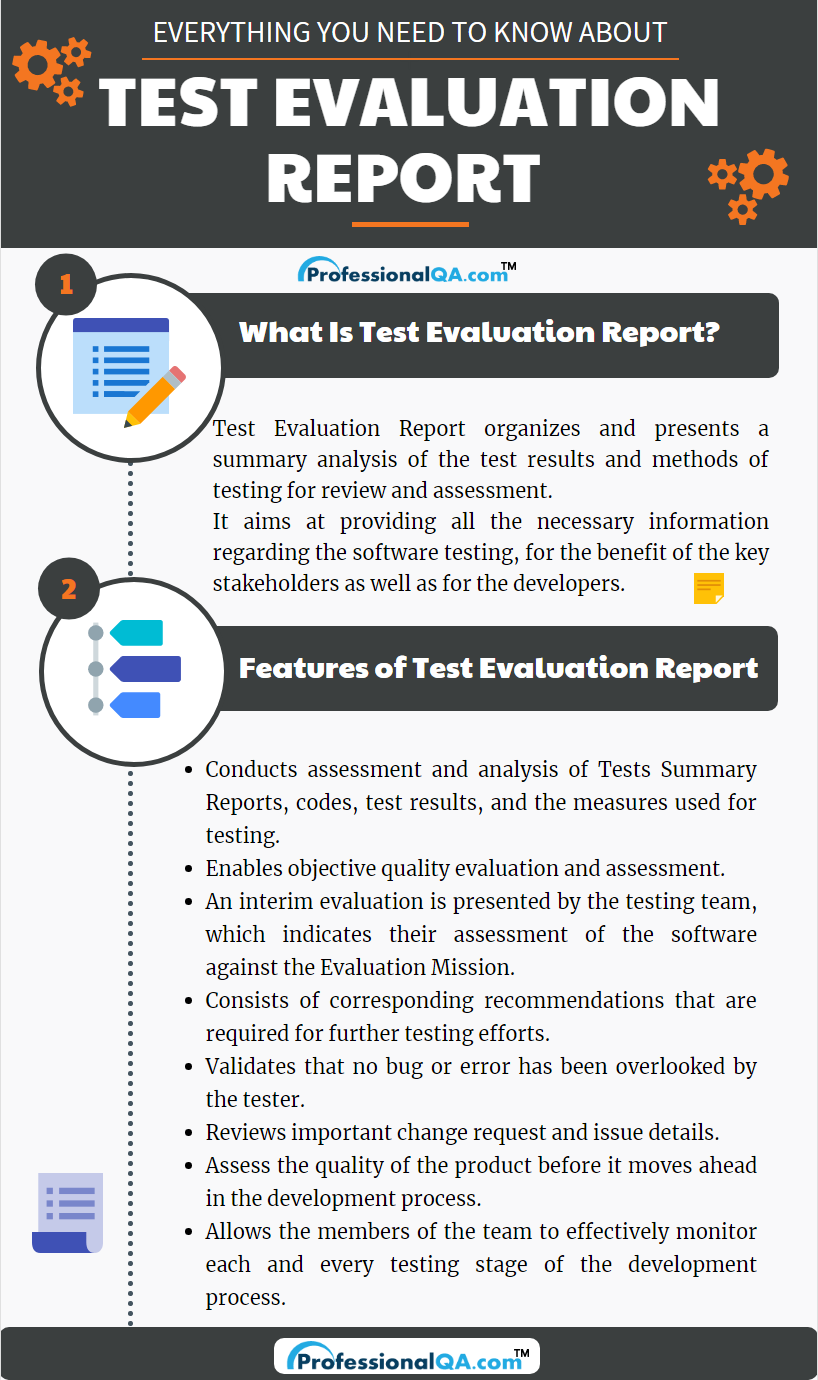

“Evaluation” is a process of gathering and analysing data, in such a manner that the resulting information can be used to determine whether an organization, software or program is effectively carrying out the planned activities and is successfully achieving its stated objectives and anticipated results. Software and program evaluation, conducted on a regular basis, can greatly improve the management and effectiveness of an organization and its programs. It could further help in collecting different types of information needed by managers at different levels of the organization.
As mentioned before, evaluation is performed to get in-depth knowledge about a program or a software and it allows the testers to monitor the software development process thoroughly. Following a similar process, an evaluation or analysis of all the tests and test results is executed during the software development process by a tester, which is later provided to the client and other members of the team, in the form of Test Evaluation Report.
Prepared after the completion of testing and Test Summary Report, Test Evaluation Report organizes and presents a summary analysis of the test results and methods of testing for review and assessment. It aims at providing all the necessary information regarding the software testing, for the benefit of the key stakeholders as well as for the developers. It presents an accurate and fair assessment of the software based on the defined Evaluation Mission. In addition, this report entails recommendations for future test efforts and a general statement of relative quality, which further increases its importance during the software development process.

From providing a detailed analysis of all the tests executed during the software development process to ensuring the quality of the end results, Test Evaluation Report delivers various important details about the software and its development process. Apart from these, the Test Evaluation Report consists of other significant features, like:
Test Summary Report is extremely essential to Test Evaluation Report, as the analysis and assessment done during the latter is based on the various Test Summary Reports provided after the completion of every test cycle.
Test Summary Report is an important deliverable, which is prepared at the end of a testing project, or rather after testing is completed. The prime objective of this report is to explain various details and activities about the testing performed on a project, to the respective stakeholders like, manager, client and others. Based on the provided test report, the developers and the stakeholders can evaluate the quality of the tested product and make decisions regarding the release of the software, which can further improve the management and effectiveness of the organisation.
By crafting a test summary report a tester can enjoy several benefits and advantages. However, to achieve the best results it is really important to create a report that consist of all the necessary information regarding the testing techniques and the results provided by it. Therefore, one should follow the below mentioned guidelines to create correct and effective Test Summary Report:
Test Summary Report can be different for various kind of testing and its content too can vary based on the demands of different organizations or clients. However, the basic information included in all of these reports are quite similar and comparable. A typical Test Summary Report therefore consists of the following information:
As Test Summary Report plays an important role in software development cycle, one can find several advantages related to it. It not only helps the tester in monitoring the testing of software, but also makes the whole process of testing more efficient and cost effective. Other benefits of Test Summary Report are:
Testing a software during its development process is nowadays extremely necessary and is done by all testers. It not only validates the quality of the product, but all makes sure that the requested demands of the clients are fulfilled. Test Evaluation Report, which is provided after the completion of the test summary report, is immensely important.
The goal of this report is to deliver detailed evaluation and assessment of the test results and the methods used for testing to the stakeholders. The information here is collected, organized and presented to the client with an evaluation from the testing team, which indicates their assessment of the software against the evaluation mission.
Therefore, through Test Evaluation Report, the testing team can validate the proper functioning of a software and ensure that it is successfully achieving its stated objectives and anticipated results.
Advertisement: